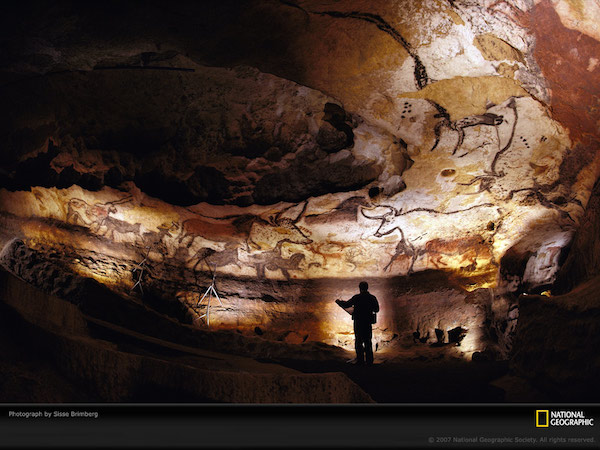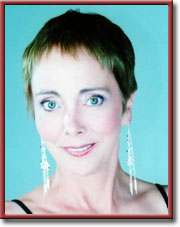Composing Oneself at The Threshold
“The thresholds—the two thresholds all of us pass over, descending into sleep, ascending into what we consider to be full consciousness—are the most precious, fertile, productive, and often fearful or blissful or alien territory we traverse as minds; perhaps as souls. As human beings, we are most present, most alive, certainly most creative, less hidebound, when we drift through these open doors, letting the screens slam behind us, or creak open before us.”—By Elizabeth Boleman-Herring
“In the curious intermediate states between waking and sleep—the ‘hypnagogic’ state that may precede sleep or the ‘hypnopompic’ state that may follow awakening—free-floating reverie and dreamlike or hallucinatory apparitions are particularly common.”—Oliver Sacks, Musicophilia: Tales of Music and the Brain
“Other terms for hypnagogia, in one or both senses, that have been proposed include ‘presomnal’ or ‘anthypnic sensations,’ ‘visions of half-sleep,’ ‘oneirogogic images’ and ‘phantasmata,’ ‘the borderland of sleep,’ ‘praedormitium,’ ‘borderland state,’ ‘half-dream state,’ ‘pre-dream condition,’ ‘sleep onset dreams,’ ‘dreamlets,’ and ‘wakefulness-sleep transition’ (WST). Threshold consciousness (commonly called ‘half-asleep’ or ‘half-awake,’ or ‘mind awake body asleep’) describes the same mental state of someone who is moving towards sleep or wakefulness but has not yet completed the transition. Such transitions are usually brief, but can be extended by sleep disturbance or deliberate induction, for example during meditation.” Wikipedia entry on “Hypnogogia”
Ruminant With A View
By Elizabeth Boleman-Herring

BRIDGE & TUNNEL New Jersey—(Weekly Hubris)—5/26/2014—On the thresholds between waking and sleeping, and sleeping and waking, I do my best work.
This content—and, in my case, it’s usually verbal, or “writing in my head”—never makes it directly to a page. This worried me as a child. I kept a notebook by my bed, and roused myself to write down whatever it was I knew would slide away from me, back into the dark, by morning.
Now, I have realized this state of play, on the thresholds, is another type of thing altogether. It is sufficient unto itself, most of the time. If a metaphor, or an image, or a quatrain occurs, comes to, or through, or upon me, the ephemeral, and exquisite composition itself is enough: no further work required.
Like fireflies, the sort of light one perceives, and generates, between sleeping and waking, is not possible to catch in a bottle. Nor should we try to.
Falling asleep, I may compose entire poems, and sound out the rhymes, arrange the lines into stanzas, and not once feel compelled to wake further, to leave the rapidly erasing page for the light; for ink. That I pass, fully, from the confines of the daily room, onto the threshold into the dark, and know the anteroom for what it is? Well, that is a twice-daily gift.
In the liminal state before waking, or after “first waking,” and then falling back into sleep, like a diver arcing backwards off a high board into warm water, the work, and play, is less word-heavy than story-driven. Some version of my recognizable self is almost always involved in the narrative—I am rarely a passive observer—but the realms I visit, somewhat conscious, or “conscious in another way,” are fabulous.
In the mornings, whether at 3 or 7, my dreams—though this word was to me always too narrow a term—are lucid and, seemingly, I can rouse from them and return to them several times, though I’m not truly interested in knowing much more about these states from a sheerly scientific point of view.
I prefer, when my eyes are closed, fully to close my eyes, and give that skeptical, dithering brain a chance to wriggle out of its usual bondage. Between the conscious, sun-lit, and communal work of the day, and the realm of deepest blackness—which may be, in fact, what death is for us all—there are two slim sills upon which we step, and from which we take flight.
Between them is sheer mystery and unknowing; the pitch-dark thing so many of us dread.
The thresholds—the two thresholds all of us pass over, descending into sleep, ascending into what we consider to be full consciousness—are the most precious, fertile, productive, and often fearful or blissful or alien territory we traverse as minds; perhaps as souls. As human beings, we are most present, most alive, certainly most creative, less hidebound, when we drift through these open doors, letting the screens slam behind us, or creak open before us.
Wikipedia helpfully fills us in a bit on “thresholds”: “In anthropology, liminality (from the Latin word līmen, meaning ‘a threshold’) is the quality of ambiguity or disorientation that occurs in the middle stage of rituals, when participants no longer hold their pre-ritual status but have not yet begun the transition to the status they will hold when the ritual is complete. During a ritual’s liminal stage, participants ‘stand at the threshold.’ between their previous way of structuring their identity, time, or community, and a new way, which the ritual establishes.
“The concept of liminality was first developed in the early 20th century by anthropologist Arnold van Gennep and later taken up by Victor Turner. More recently, usage of the term has broadened to describe political and cultural change as well as rituals. During liminal periods of all kinds, social hierarchies may be reversed or temporarily dissolved, continuity of tradition may become uncertain, and future outcomes once taken for granted may be thrown into doubt. The dissolution of order during liminality creates a fluid, malleable situation that enables new institutions and customs to become established.”
Liminal states—falling asleep, slowly waking—are echoed in all human endeavor: the biological, biochemical ability to abandon “reality” for the demi-monde of dreams, for which we are wired as mammals, as homo sapiens, enables us (I believe) to imagine, to hypothesize, to expand our field of vision . . . if we permit ourselves to do so (and, of course, if we are not so spiritually snuffed out by backbreaking labor as to plunge into sleep, dreamless, and wake, vision-less).
Reading about humankind’s use of light-in-the-dark in Jane Brox’s book, Brilliance: The Evolution of Artificial Light, I was touched to the core by how long a tradition is the lamp; and our general desire to light the darkness.
Brox quotes Richard Nelson’s work on the Alaskan Koyukon people, whose winter was long, dark, and fearsome, but who lit their homes “by burning bear grease in a shallow bowl with a wick, or by burning long wands of split wood, one after another.
“But bear grease was scarce, and the hand-held wands were inconvenient, so in midwinter the dwellings were often dark after twilight faded.”
And here, in Richard Nelson’s account, is where my own ears pricked up: “Faced with long wakeful hours in the blackness, people crawled into their warm beds and listened to the recounting of stories . . . . The narratives were reserved for late fall and the first half of winter because they were tabooed after the days began lengthening. Not surprisingly, the teller finished each story by commenting that he or she had shortened the winter: ‘I thought that winter had just begun, but now I have chewed off part of it.’”
Though I know how radically different life is, and how miserable it can be—because I have lived it—without electricity, I also mourn experiencing the liminal thresholds “as a tribe,” as a family. Today, in the West, even couples rarely wake in the night to share dreams or visions: we have become, increasingly, isolated in our flights of fancy.
That we dream at all is a necessity and a gift, but that we once dreamed as a community, and valued the dreaming life, and now have so largely lost those capacities, is tragic.
As a child and, really, up until the age of 11, my dream life and waking life were anything but defined by rigid borders. As a three- and four-year-old in Pasadena, I was convinced, and the belief lasted for years afterward, that elephants had dangled their trunks in through my bedroom windows, just around the patterned café curtains. How real this image was, and is still, to me is a testament to how gentle is our species’ grip on shared reality.
In other cultures, in other ages, the reality of those elephants would not be questioned, not be (so to speak) held up to the light. My elephants would be dignified as a “vision,” not a “dream.” In early childhood, too, I was utterly certain that I could fly, as I “did so” almost every night, having crossed over the magic threshold.
Brox opens her book on artificial light (another meager term) with a discussion of the cave paintings of La Mouthe, created by Ice-Age artists 18,000 years ago in caverns deep in the earth. The creators of the wall paintings of Lascaux, with their horses and stags and bison, their musk oxen, ibexes and great cats, used nothing brighter than “a handful of lamps as they drew.”
Writes Brox: “It’s likely they saw only a small portion of their work at any one time, and it receded in darkness behind them and lay in shadow above them.”
And what better metaphor is there for the human condition than that? We exist, in a half-lit moment, between waking and sleeping, sleeping and waking. But, in those liminal moments, on those thresholds, we exist fully and truly.

Note: The photograph of the Lascaux wall paintings was taken by Sisse Brimberg, and derives from http://photography.nationalgeographic.com/wallpaper/photography/photos/cave-exploration/lascaux-cave-walls/.



7 Comments
Anita Sullivan
Yes, yes! This is so well said. I will send it to friends. This whole process you describe is an essential part of being human. We quash it at our peril.
Elizabeth Boleman-Herring
Anita, thank you. I felt I hemmed and hawed quite a lot: there isn’t a giant thesis statement here, though–the essay reflects the state(s) I so love. But I’m glad it “reached” you. It took me, literally, 62 years, and a lot of reading this past year, even to realize how luminous are the brief portals….. Love you. e
Danny M Reed
Subliminal once was a term used ostensibly in behavior modification, specifically in Marketing to sell more Product, but “beneath the threshold Messages” are usually dismissed to the scrap heap of ESP, UFO, and Yeti sightings acquiescing to simpler tricks and subtle appeals to the “reptilian” brain. Some are more suggestible to hypnosis or seduction. Subconscious or unconscious activity certainly is the greater mass of submerged Mind in proportion to the “tip of the iceberg” Conscience. Early Transcranial Magnetic Pulse helmets often generated a sense of “presence” while Deep Brain Stimulation yields forgotten memories, sensations, and other things. If something is truly Unconscious I don’t see how it can be said to be Consciousness.
Elizabeth, you are aware my Bipolar brain has been awash in neurotransmission compounds, appealed to on all levels, shocked into seizures, measured, and scanned and experimented upon for nearly 30 years now. Sleep Studies revealed a Narcolepsy because at any time, day or night, that I sleep there is a segue into dream phase immediately. They see both hemispheres are hyperactive and firing which might explain my “awareness” under general anesthesia until they raised the dosage exponentially. It is paradoxical that I take stimulants to stay awake while the dosage of anesthesia needed to knock me out completely is unusually high.
I feel the Mind is immensely occupied at all times and interfaces the Body so completely with it’s senses and intuitions about the environment and other creatures that, like the much “larger” Deep Internet, the Conscious Mind is like chrome on a bumper and paint on the body of an automobile in proportion to the Whole. It is an even larger task to map this and measure that than it is DNA. The Portal you are referring to, Liz, I feel is one of many porous gateways we pass into. I developed and cultivated spontaneous dissociation early to cope with the intensity of stimulation from within and around my habitats in an authentic effort to escape.
Elizabeth Boleman-Herring
Ahhhh, Danny, thank you for this. Most of us are so, so, so unconscious, and yet you–due to dire necessity and grand intelligence–have been compelled to inhabit, traverse and map fearful, wondrous areas few of us “live” in now, today, for more than brief moments at most. I know you’ve read Bruce Chatwin’s “Songlines.” Our trajectory is very, verrry uncomfortable, Danny, but you have company beside you, always, in me. Much love, Elizabeth
Alan Ichiyasu
#1:
I’M HIP. I COMPOSE WHILE DREAMING. SO, THERE IS A SMALL CASSETTE RECORDER WHERE EVER I MAY BE SLEEPING.
THE SUB-CONCIOUS CAN BE AN INCREDIBLE TOOL. IT CAN ALSO BE A LOT OF SUBSTANCE THAT LAYS IN KITTY LITTER.
ITCH
Emily Chernicoff
Thresholds are precious. I think of them as moments of ‘incubation.”
But those with RBD (a REM disorder)- like my partner -suffer greatly and are missing the transmitter that mitigates between the dream and reality – They are at risk during sleep of harming themselves or their partner. I’ve been socked in the head many a time during one of his nightmares… it may be a precursor to dementia or parkinson’s disease. I feel sad that he canNot distinguish and misses those liminal states. It is a disturbing and bizarre sleep disorder. Odd that I’ve never mentioned it to you before… I’m unwittingly subject to the risk of abuse on a nightly basis, but it is still worth the skin to skin energy of sleeping together. How better to recharge one’s batteries after living a day in life as it is now, in the face of extinction. Love to you and thank you for this piece. Love the art of Lascaux and all of the cave paintings.
Elizabeth Boleman-Herring
Emily, the Ambien I now take nightly (and have taken for years) interrupts my own waking/sleeping states, but they must be so crucial to me (and all of us) that, over time, my brain has retained Ambien’s knock-out properties while allowing for more and more liminal semi-consciousness, esp. upon re-awakening. It has always been “where I do my best work.” My late stepfather–whose descent into and death from dementia were precipitous–also had RBD, but I hazard that many men do, and I question a hard link to Alzheimer’s. (I have my own theory about why RBD has been useful, over the course of evolution, to male Homo sapiens.) I’m so sorry, though, Emily, for both of you: my mother suffered real physical injuries sleeping with my late stepfather: in her case, they were NOT worth it. In your case, they are. Much love, e